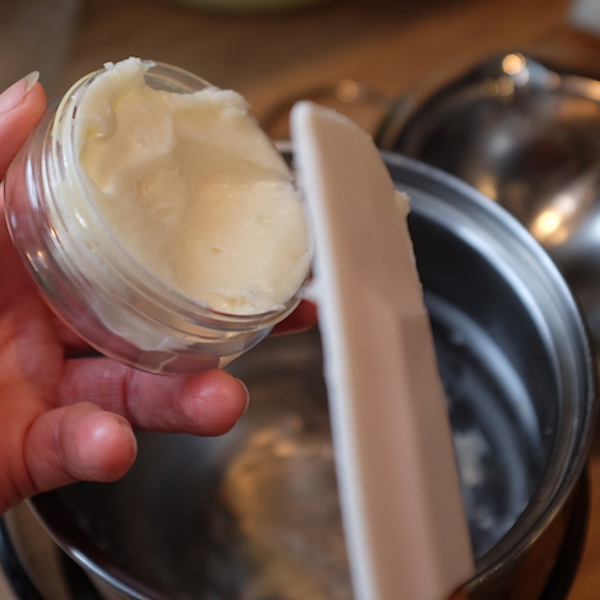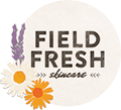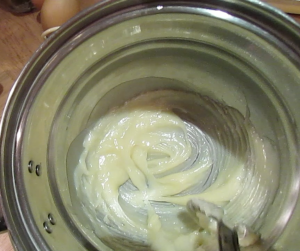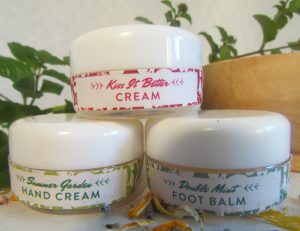
Balms and Creams
Skincare products come in many forms from purely water based like a simple plant infusion to the waxy balms that need just a smear in application.
Balms and creams sit at different points along this spectrum. And the defining aspect of the spectrum: water.
Water content
While it’s true that a whole variety of product forms can be achieved by varying the amount of water in your blend – from lotions that are so light you can spray them through a fine nozzle, to those you can pour from a bottle and others that work better squeezed from a tube or dabbed from a jar – the critical difference between a cream and a balm is that one contains water and the other doesn’t.
Balms and creams may have similar base ingredients in terms of their waxes, oils and butters but while these are blended with water to from a cream, in the balm water is omitted. This means that while a cream can be just about any consistency from lusciously thick to delightfully light, a balm will always be more solid and, confusingly ‘creamy’.
Just how solid or ‘creamy’ your balm is will depend on the proportions of oils, butters and waxes it contains. The more solid the ingredients (i.e., more waxes or firmer butters) the more solid the final product; the more liquid the ingredients (i.e., oils and softer butters) the creamier your final product.
Why does it matter whether you have a balm or a cream?
You may be much more concerned about the beneficial properties of the individual ingredients, or about the overall impact of the product, than about whether it is a balm or a cream but there are two very good reasons to be aware of whether your product has water in it or not.
1. On-skin performance
Firstly, a product will work differently with your skin depending on whether it has water in it or not.
Your skin secretes its own blend of oil and water called sebum. Sebum production is critical to keeping your skin moist and protected. Each person will have their own specific ratio of oil to water. Those who naturally produce more oil may consider themselves to have oily skin; those with less water in their blend may find themselves suffering from dehydrated skin. You’ll know that products perform differently on different people, it’s one of the reasons it’s so difficult to share product recommendations, we all have our own unique needs. One of the reasons for this is our natural personal hydro-lipid blend – the specific combination of water and oil that our skin secretes. The closer a product’s blend to your natural hydro-lipid blend, the more readily your skin will work with that product.
At times when we feel our own hydro-lipid blend is out of kilter, we can use products with natural oils and water closer to our desired levels to restore balance. Sometimes we do this instinctively, you know when you feel the need to slather on a creamy, buttery product, or when you feel a thirst for something rehydrating on your skin.
So a cream with both oil and water in it is likely to work well with our skin. That’s the reason so many skincare products are made in the form of creams and lotions.
Why would we use a balm with no water in it then?
Balms have a myriad of purposes. They may not be the best thing to turn to as a moisturiser, when your skin needs the dual action of oil and water; they may not make the best cleansers as ideally you’d have oil to lift the oil-based dirt along with water to dissolve the salts and other grime. But they are great when what you need is protection preventing any harsh invasions from the elements or household products, for example. Or when you want to seal in moisture and prevent its loss, an important part of getting damaged skin back on track. And when you want to apply beneficial ingredients in a concentrated topical form and know they will gradually sink in and work with your skin.
That’s why you find balms in the form of lip balms, soothing eye balms, healing balms and balms for spot treatments.
2. Shelf life
The second significant difference between a balm and a cream is shelf life. It’s the water content that has a massive impact. Any product containing water will only last a matter of days unless it contains a preservative.
So when selecting a cream, always check to see the preservative it contains. If it’s made freshly from natural ingredients it’s a good idea to keep it in the fridge, preservative or not, and keep an eye on the use-by dates.
By contrast, a balm, without water, doesn’t need a preservative in order to last. It’s shelf life will depend on the component ingredients and may well be between 6 months and a year, if treated well and used carefully taking steps to avoid contamination.
Beauty Balms
There’s been a trend in recent years for all-in-one Beauty Balms, a pot of magical promise that’s good in any situation.
Beauty Balms have been hailed as the go-to for cleansing, moisturising, protecting and all-round beautifying – taming eyebrows, glossing lips, strengthening nails, easing sores …
While I’m a massive fan of having that little pot of go-anywhere balm (check my bag, you’ll see I’m rarely without my favourite), I do not see it as an all-round skin saviour. It’s a trusty friend, ready to step in to help, to heal, to soothe to calm as and when necessary. It can travel with me wherever, including on flights. It’s simple and unfussy, doesn’t worry too much about temperature and doesn’t take up much room. I wouldn’t be without my balm.
But …
when I’ve the luxury of my own bathroom, or space in my washbag, there are a collection of creams and balms which have their own unique roles and perform them fantastically.
So, find yourself a go-to do-anything balm (hint: mine’s called ‘Kiss It Better Cream’ I know, a confusing name for a balm!)
but also, find yourself the balms and creams that perform best for whatever needs you have. To learn loads more about how to select the best products for your skin, and how to blend your own, take a look at Vital Skincare – you’ll be glad you did.
Blend it yourself
If you want an easy way to learn the difference between a balm and a cream, try making them yourself. It’s easy to do so with a Field Fresh Skincare One Pot Kit.
You’ll find the balm kits have just two simple sachets of ingredients – one with oils, butters and waxes, the other with oils and essential oils. The three different balm kits all produce balms of different consistencies because the proportions of oil, butter and waxes in them vary. They’ve been designed for specific purposes:
Lemon Balm for Lips is a firmer balm making it good to apply from a tin or stick, while being soft in use due to ample quantities of butter.
Orange Smoothing Balm is oilier as this has been formulated to help with any patches of dry skin or knobbly bits that need attention. Regular applications can soothe and smooth.
Kiss It Better Cream is my go-to for bumps, bruises, itches, sores and much more besides. It has added honey and minimal wax making it creamy and comforting.
The kits that make creams have those two sachets plus, you’ve guessed it, the water component. In Field Fresh Skincare creams the water component is a herbal infusion so the kit contains a herb pocket which you immerse in water to create an infusion. You then need just a tablespoon of this infusion to join your oils and waxes, that’s just enough to create a lovely, soft cream that you can scoop out of the jar.
The creams you can make are:
Day and night face creams: Face the Day and Marshmallow Dream Cream
Hand cream: Summer Garden Hand Cream
Body cream: Essential Sensual Body Moisturiser
and Foot cream (confusingly called a balm): Double Mint Foot Balm





Hi there! Such a great post, thanks!
Good info. Lucky me I discovered your site by chance (stumbleupon).
I’ve book marked it for later!
Hi! This is my first visit to your blog!
We are a collection of volunteers and starting a new
project in a community in the same niche. Your blog provided us
beneficial information to work on. You have done a extraordinary job!
Thank you for letting us know, I wish you well with your venture and do keep reading the blog.